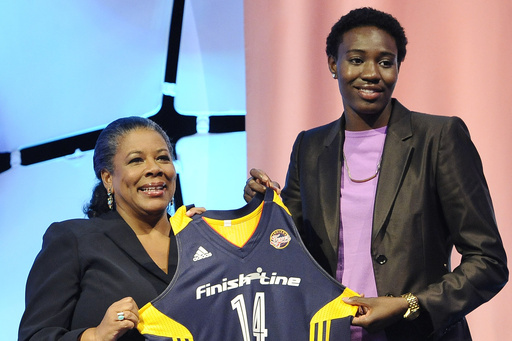
In a remarkable year for women’s professional sports, top athletes are enjoying significant financial rewards for their performance and marketability.
One of the standout examples is the WNBA, which recently concluded a groundbreaking season characterized by record-breaking viewership and attendance figures. The league also succeeded in securing numerous brand partnerships and corporate endorsements, culminating in a draft lottery event set for the 2025 season.
Emerging stars in the WNBA, such as Caitlin Clark and Angel Reese, have transitioned from college athletes to professional players with impressive endorsement deals thanks to name, image, and likeness agreements. They’ve signed contracts with major brands like Nike, Reebok, and Gatorade, and players from various backgrounds have formed partnerships with companies including CarMax and State Farm. However, despite the financial successes of many, there remain some players who feel overlooked.
The WNBA’s recent collaboration with Kim Kardashian’s underwear line SKIMS aimed to highlight diversity by featuring women of color and members of the LGBTQ+ community in advertisements. However, the campaign received criticism for not including masculine-presenting players, which prompted backlash from athletes. Natasha Cloud of the Phoenix Mercury expressed her disappointment on social media, while Dallas Wings’ Natasha Howard echoed similar sentiments, noting the additional challenges faced by Black LGBTQ+ players in securing endorsements.
In light of this, Cloud and Howard decided to take matters into their own hands by partnering with Woxer, a brand owned by Latina and LGBTQ+ individuals that focuses on gender nonconforming apparel. Woxer’s founder, Alexandra Fuente, emphasized the importance of representation and expressed a desire to collaborate with more female athletes going forward. Fuente noted that while larger brands tend to create partnerships based on traditional norms, smaller companies like hers seek to break those barriers and create opportunities for diverse athletes.
Ketra Armstrong, a professor of sport management, highlighted the hesitation of many mainstream brands to engage with athletes who defy conventional expectations. She noted that brands often prefer to play it safe, which results in a lack of representation for marginalized players. Research by Risa Isard from the University of Connecticut unveiled that Black athletes in the WNBA receive less media exposure compared to their white counterparts, especially those who do not conform to traditional feminine appearances. This lack of attention affects the marketability and endorsement potential for these athletes, particularly since WNBA players often rely on sponsorships due to comparatively lower salaries.
Ajhanai Keaton, a professor at UMass Amherst studying the intricacies of race and gender identity in sports, pointed out that overlooking Black LGBTQ+ women as potential brand ambassadors is a mistake. The fandom of the WNBA is diverse and inclusive, and brands may not fully recognize the extent to which consumers connect with LGBTQ+ athletes. There are signs of improvement, however.
Briana Scurry, a trailblazer in women’s soccer and a two-time Olympic Gold medalist, reflected on the changes in sponsorship opportunities since her career. In the late ’90s, despite her historic contributions to the U.S. Women’s National Team, including her decisive role in winning the World Cup, Scurry felt the absence of strong endorsement deals. She attributed this gap to her race and sexual orientation.
Today, Scurry observes a shift in women’s soccer, with a more diverse roster that includes stars like Sophia Smith and Trinity Rodman. She recognizes that increased visibility has translated into better marketing and endorsement opportunities for players. Scurry stated that, unlike in the past, women’s sports are increasingly being recognized as a viable business venture rather than a charitable cause.
For skeptics who question the commercial potential of athletes like Black LGBTQ+ women, Keaton urges them to look at the engagement on their social media platforms, which showcase overwhelming support and enthusiasm from fans.
Overall, while challenges remain, the landscape for women in sports is evolving, and there’s hope that opportunities will continue to broaden for all athletes, particularly those who break conventional molds.
